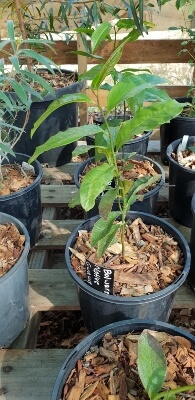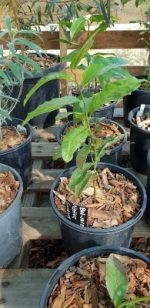
Bolwarra Berry: A Guide to Cultivating and Enjoying This Australian Native Treasure
The Bolwarra berry, scientifically known as Acmena smithii, is a captivating Australian native plant that offers both ornamental beauty and delicious, edible fruit. Often recognized for its attractive, glossy foliage and striking pink to purple berries, the Bolwarra berry is gaining popularity among gardeners and food enthusiasts alike. This article will delve into the intricacies of caring for this versatile shrub or small tree, ensuring a thriving plant and a bountiful harvest. We’ll cover everything from ideal growing conditions to propagation, pest management, and finally, explore some delightful ways to enjoy its unique fruit.
Understanding the Bolwarra Berry Plant
Acmena smithii is a member of the Myrtaceae family, which also includes iconic Australian plants like the Eucalyptus and Bottlebrush. It’s an evergreen plant, typically growing as a dense shrub or a small, picturesque tree, reaching heights of anywhere from 3 to 15 meters depending on the cultivar and growing conditions. Its smooth, greyish bark peels in thin flakes, adding to its aesthetic appeal. The leaves are lanceolate to elliptical, arranged oppositely, and possess a glossy, deep green surface.

The plant produces clusters of small, white, fluffy flowers during the warmer months, which are highly attractive to pollinators. These flowers are followed by the development of its signature berries, which begin as green and gradually mature to shades of pink, rose, red, and eventually a deep purple or magenta when fully ripe. The berries are fleshy, typically round or slightly oval, and contain one or two small seeds. Their flavour is often described as mildly sweet with a hint of tartness, sometimes likened to a mild apple or a soft pear.
Cultivating Your Bolwarra Berry Plant: Essential Care Guide
To successfully grow and enjoy your Bolwarra berry, understanding its environmental needs is paramount.
1. Climate and Location:
Bolwarra berries are well-suited to a range of Australian climates, thriving in temperate to subtropical regions. They are relatively hardy and can tolerate light frosts once established, though prolonged or severe frosts can cause damage. They prefer a location that receives ample sunlight, ideally full sun to partial shade. In hotter climates, some afternoon shade can be beneficial to prevent leaf scorch.
2. Soil Requirements:
The Bolwarra berry is not overly fussy about soil type but performs best in well-draining, fertile soil. It can tolerate a variety of soil conditions, including sandy loams and clay soils, as long as they are not waterlogged. Improving the soil with organic matter, such as compost or well-rotted manure, before planting will significantly benefit the plant’s growth and fruit production. Aim for a slightly acidic to neutral pH.
3. Watering:

Consistent moisture is crucial, especially during the establishment phase and when the plant is fruiting. Water deeply and regularly, allowing the soil to dry out slightly between waterings. Avoid overwatering, as this can lead to root rot. During prolonged dry spells, provide supplemental watering. Mature plants are more drought-tolerant but will benefit from watering during extreme heat.
4. Fertilizing:
A balanced, slow-release fertilizer applied in spring and again in late summer will promote healthy growth and fruit production. Organic fertilizers, such as composted manure or seaweed extract, are also excellent choices. Avoid excessive nitrogen, which can lead to lush foliage at the expense of fruit.
5. Pruning:
Pruning is primarily for shaping, managing size, and encouraging fruit production. Light pruning can be done at any time to remove dead, damaged, or crossing branches. For more significant shaping or to encourage a bushier habit, prune in late winter or early spring before new growth begins. Removing some of the older, less productive wood can also stimulate new fruiting spurs.
6. Propagation:
Bolwarra berries can be propagated from seed, cuttings, or by grafting.
- Seeds: Collect seeds from ripe berries, clean them thoroughly, and sow them in a well-draining seed-raising mix. Germination can be slow and erratic, so patience is key.
- Cuttings: Semi-hardwood cuttings taken in late spring or early summer are the most successful. Dip the cuttings in rooting hormone and plant them in a moist, well-draining medium.
- Grafting: Grafting onto a suitable rootstock can be done to improve vigour or fruit quality.
7. Pests and Diseases:
Bolwarra berries are generally hardy and resistant to most pests and diseases. However, occasionally, they may be affected by:
- Fruit Fly: This is a common pest for many fruiting plants in Australia. Covering the ripening fruit with fine netting or using organic fruit fly traps can help manage infestations.
- Scale Insects: These can be treated with horticultural oil or insecticidal soap.
- Root Rot: This is usually caused by poor drainage. Ensuring adequate drainage and avoiding overwatering is the best preventative measure.
Harvesting Your Bolwarra Berries:
The fruiting season for Bolwarra berries typically occurs from late spring through to autumn, depending on your location and the specific cultivar. The berries are ready to harvest when they have developed their full colour and are slightly soft to the touch. Gently twist or snip them from the stem. They are best enjoyed fresh but can also be stored in the refrigerator for a few days.
Enjoying the Bounty: Recipes and Culinary Uses
The unique flavour profile of Bolwarra berries makes them a delightful addition to a variety of culinary creations. While they can be enjoyed fresh, their texture and taste lend themselves well to further processing.
Fresh Consumption:
The simplest way to enjoy Bolwarra berries is to eat them straight off the plant. Their juicy, slightly tart sweetness is refreshing and invigorating.
Jams and Jellies:
Bolwarra berries are excellent for making jams and jellies due to their natural pectin content. The resulting preserve is often a beautiful pink to magenta colour with a delightful balance of sweet and tart.
- Basic Bolwarra Berry Jam Recipe:
- Ingredients:
- 1 kg ripe Bolwarra berries, washed and stems removed
- 750g granulated sugar (adjust to taste)
- Juice of 1 lemon
- Instructions:
- Place the berries in a large, heavy-bottomed saucepan.
- Add the lemon juice and gently crush some of the berries with a potato masher or the back of a spoon to release their juices.
- Heat over medium heat, stirring occasionally, until the berries soften and release more juice.
- Add the sugar and stir until it dissolves completely.
- Bring the mixture to a rolling boil, stirring constantly.
- Continue to boil for about 10-15 minutes, or until the jam reaches setting point (test by placing a small amount on a chilled plate; it should wrinkle when pushed).
- Skim off any foam from the surface.
- Carefully ladle the hot jam into sterilized jars, ensuring they are filled to the brim. Seal immediately with sterilized lids.
- Allow the jars to cool completely before storing in a cool, dark place.
- Ingredients:
Sauces and Coulis:
A simple Bolwarra berry sauce or coulis can be made by simmering the berries with a little water and sugar until softened, then blending until smooth. This can be served over ice cream, yoghurt, pancakes, or as a topping for cheesecakes.
Muffins and Baked Goods:
The berries can be incorporated into muffin batter, cakes, or crumbles. Their slightly tart flavour can provide a lovely contrast to the sweetness of baked goods.
- Simple Bolwarra Berry Muffins:
- Ingredients:
- 2 cups all-purpose flour
- 1/2 cup granulated sugar
- 2 teaspoons baking powder
- 1/4 teaspoon salt
- 1 large egg
- 1 cup milk
- 1/3 cup vegetable oil
- 1 cup fresh Bolwarra berries
- Instructions:
- Preheat oven to 190°C (375°F). Line a muffin tin with paper liners or grease it well.
- In a large bowl, whisk together the flour, sugar, baking powder, and salt.
- In a separate bowl, whisk together the egg, milk, and vegetable oil.
- Pour the wet ingredients into the dry ingredients and stir until just combined. Do not overmix.
- Gently fold in the Bolwarra berries.
- Divide the batter evenly among the muffin cups.
- Bake for 20-25 minutes, or until a toothpick inserted into the center of a muffin comes out clean.
- Let cool in the tin for a few minutes before transferring to a wire rack to cool completely.
- Ingredients:
Beverages:
Bolwarra berries can be used to infuse water, make cordials, or even be added to smoothies for a burst of flavour and colour.
A Note on Edibility:
While the berries of Acmena smithii are generally considered edible and delicious, it’s always wise to be absolutely certain of your plant’s identification before consuming any part of it. If you are unsure, consult with a local native plant expert.
Conclusion:
The Bolwarra berry is a rewarding plant to cultivate, offering a beautiful addition to any garden and a unique, flavourful fruit to enjoy. By understanding its simple care requirements – adequate sunlight, well-draining soil, and consistent watering – you can ensure a healthy and productive plant for years to come. Whether you’re a seasoned gardener or a culinary adventurer, the Bolwarra berry is a true Australian native treasure waiting to be discovered and savoured. Its versatility in the kitchen, from sweet jams to delightful muffins, makes it a valuable and delicious addition to your home and your palate.


